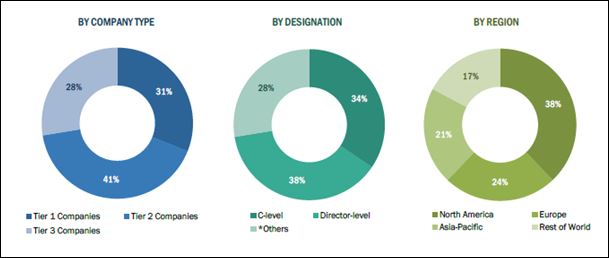Electroceuticals (also called as Bioelectric Medicines) encompass medical devices that use electrical impulses to modulate the body’s neural circuits as an alternative to drug-based intervention. Electroceuticals are also known as bioelectronic medicine, which combine molecular medicine, bioengineering, and neuroscience to discover and develop nerve stimulating and sensing technologies to regulate biological processes and treat diseases.
A number of factors such as rising geriatric population, regulatory approval for new and advanced electroceuticals, growing investments and funds for the development of novel therapies and electroceuticals, rising prevalence of neurological disorders, and growing prevalence of hearing loss are expected to drive the growth of the Bioelectric Medicine Market during the forecast period.
The Bioelectric Medicine Market is expected to grow at a CAGR of 7.9% during the forecast period to reach USD 25.20 Billion by 2021 from an estimated USD 17.20 Billion in 2016.
Research Methodology:
Top-down and bottom-up approaches were used to validate the size of the global Bioelectric Medicine Market and estimate the size of various other dependent submarkets. Individual bottom-up approach was followed for Implantable Cardioverter Defibrillators and Cardiac Pacemakers Market, Cochlear Implants Market, Retinal Implants Market, and Neuromodulation Devices Market to arrive at the Global Electroceuticals/ Bioelectric Medicine Market Size.
Various secondary sources such as directories, industry journals, databases such as Hoover’s, Bloomberg Business, Factiva, and Avention, and annual reports of the companies have been used to identify and collect information useful for the study of this market. Primary sources such as experts from both supply and demand sides have been interviewed to obtain and validate information as well as to assess dynamics of this market.
–>Global Industry Segmentation<–
Based on product, the electroceuticals/bioelectric medicine market is categorized into implantable cardioverter defibrillators, cardiac pacemakers, spinal cord stimulators, cochlear implants, deep brain stimulators, transcutaneous electrical nerve stimulators, vagus nerve stimulators, sacral nerve stimulators, retinal implants, and other electrical stimulators (gastric electrical stimulators, transcranial magnetic stimulators, and respiratory electrical stimulators). The implantable cardioverter defibrillators segment is expected to account for the largest share of the electroceuticals/bioelectric medicine market in 2016. However, the retinal implants segment is projected to grow at the highest CAGR during the forecast period.
Based on type of device, the electroceuticals/bioelectric medicine market is segmented into implantable electroceutical devices, and non-invasive electroceutical devices. The implantable electroceutical devices segment is expected to account for the largest share of the market in 2016; while, the non-invasive electroceutical devices segment is projected to grow at the highest CAGR in the forecast period.
Based on application, the electroceuticals/bioelectric medicine market is segmented into product wise such as cardiac pacemakers and implantable cardioverter defibrillators (used for arrhythmia), cochlear implants (used for sensorineural hearing loss), retinal implants (used for retinal pigmentosa), spinal cord stimulators (used for chronic pain, failed back surgery, and ischemia), deep brain stimulators (used for Parkinsons disease, tremors, depression, and others), sacral nerve stimulators (used for urine incontinence and fecal incontinence), vagus nerve stimulators (used for epilepsy and other conditions), transcutaneous electrical nerve stimulators (used for treatment-resistant depression and others), and other electric stimulators (used for gastro paresis, obesity, depression, migraine headaches, and spinal cord injuries).
On the basis of end user, the electroceuticals/bioelectric medicine market is segmented into hospitals, research institutes, and individual users. The hospitals segment is expected to account for the largest share of the market in 2016; while, the individual users segment is projected to grow at the highest CAGR in the forecast period.
You Can Also Request to Get the Customized Information on This Report
Major players in the Bioelectric Medicine Market include Medtronic plc (Ireland), St. Jude Medical, Inc. (U.S.), Boston Scientific Corporation (U.S.), Cochlear Limited (Australia), Sonova Holding AG (Switzerland), LivaNova PLC (U.K.), Biotronik (Germany), Nevro Corporation (U.S.), Second Sight Medical Products, Inc. (U.S.), and ElectroCore LLC (U.S.). Others are BioElectronics Corporation (U.S.), MED-EL (Austria), Cefaly Technology (Belgium), Stimwave LLC (U.S.), Vomaris Innovations, Inc. (U.S.), EnteroMedics Inc. (U.S.), NeuroSigma, Inc. (U.S.), and Oticon Medical (France).
Target Audience:
- Electroceuticals/Bioelectric Medicine Device Manufacturing Companies
- Suppliers and Distributors of Electroceutical/Bioelectric Medicine Devices
- Healthcare Service Providers
- Teaching Hospitals and Academic Medical Centers (AMCs)
- Health Insurance Players
- Research and Consulting Firm
- Medical Research Institutes
- Audiology Centers
- Healthcare Institutions/Providers (Hospitals, Medical Groups, Physician Practices, Diagnostic Centers, and Outpatient Clinics)
- Venture Capitalists
- Community Centers
Read More@
https://www.marketsandmarkets.com/Market-Reports/electroceutical-market-222053956.html
